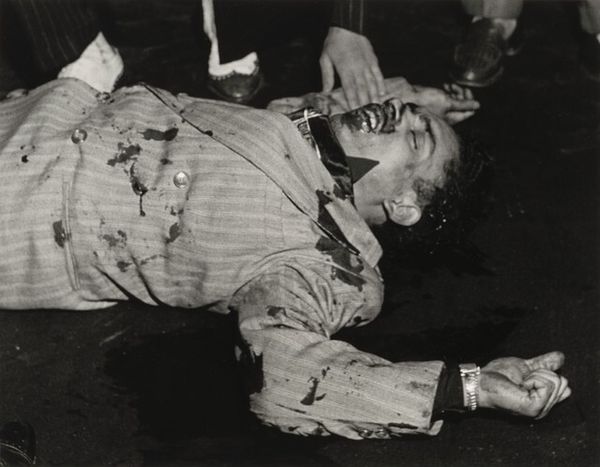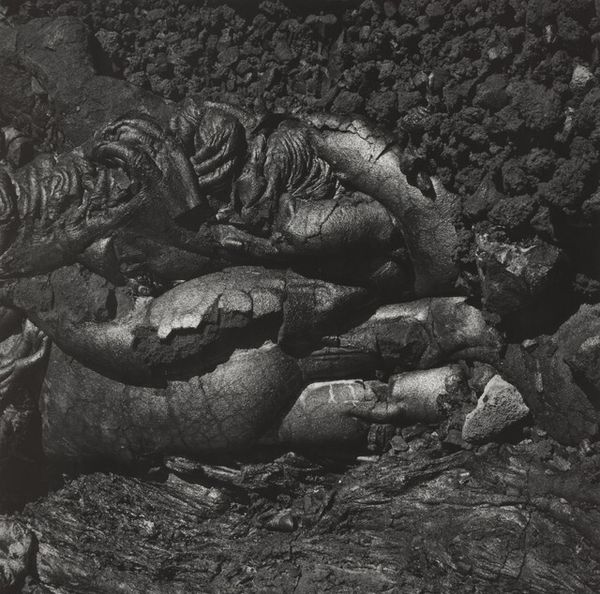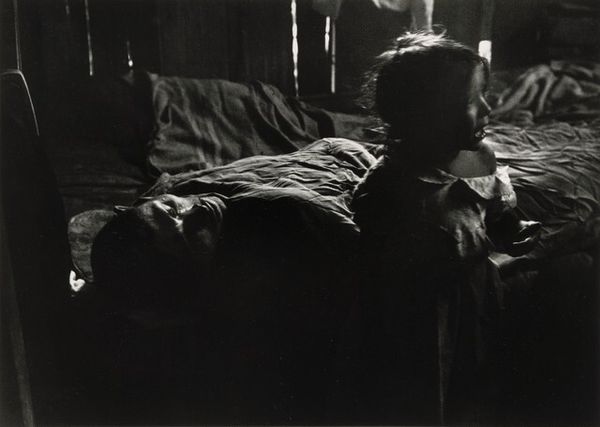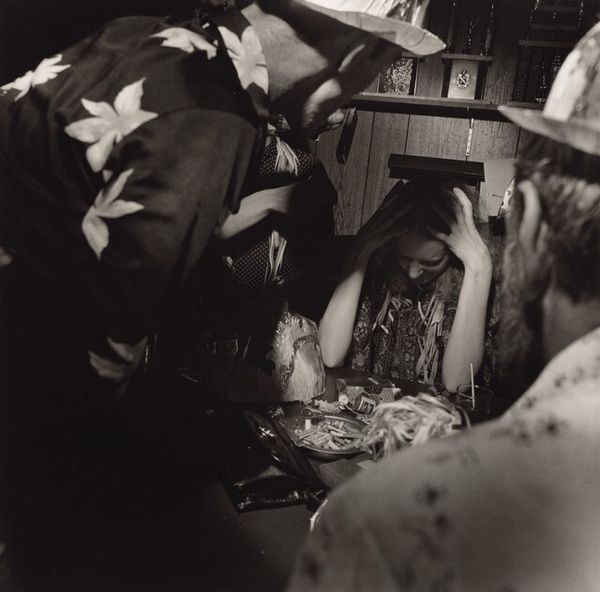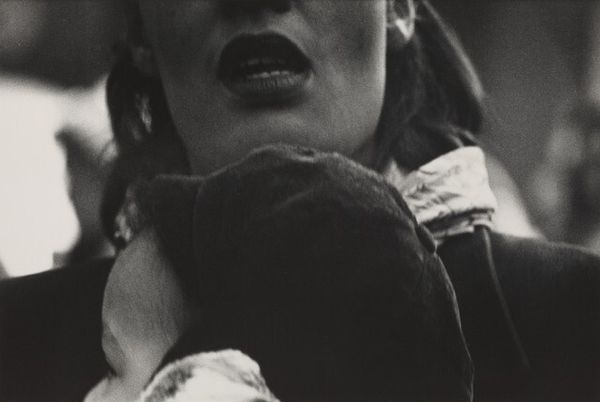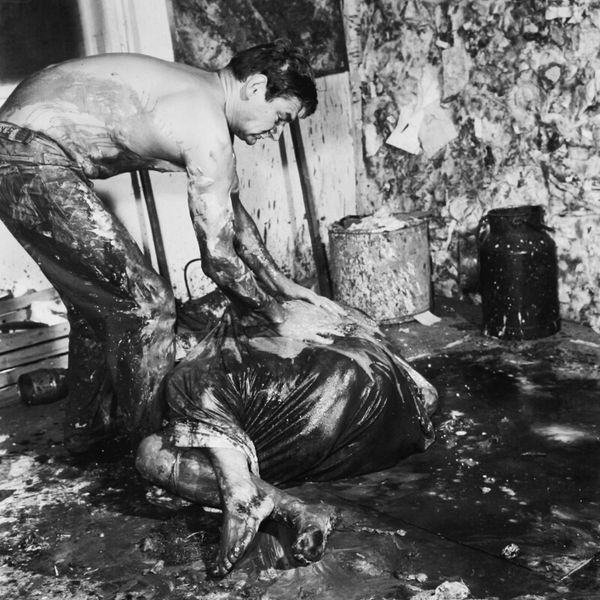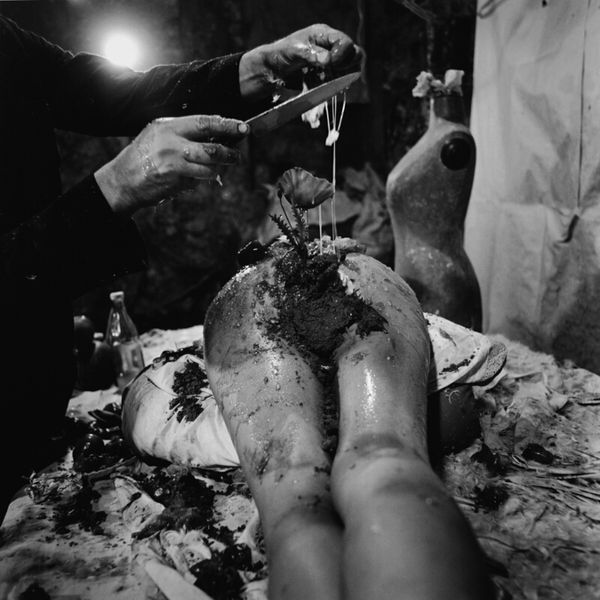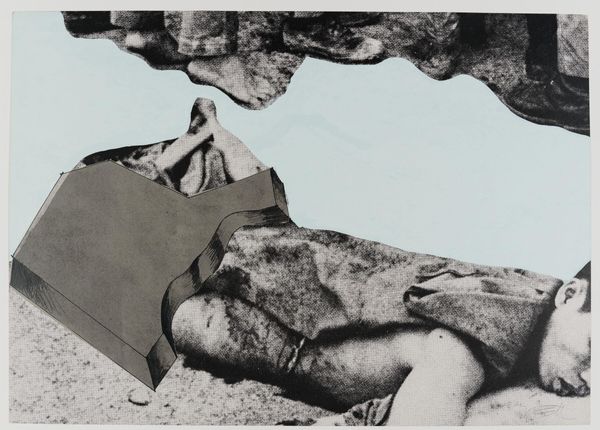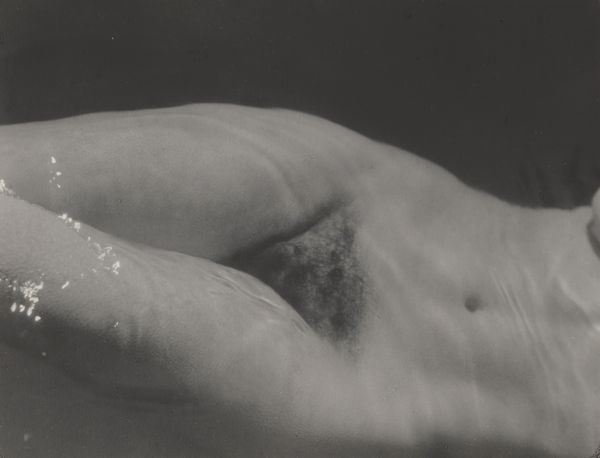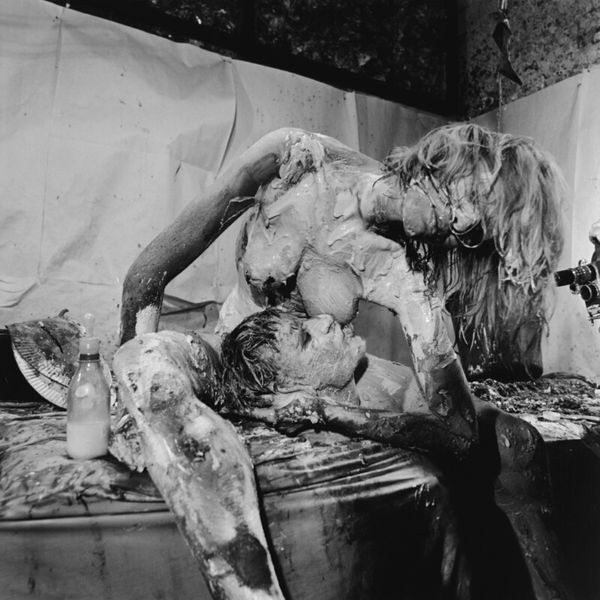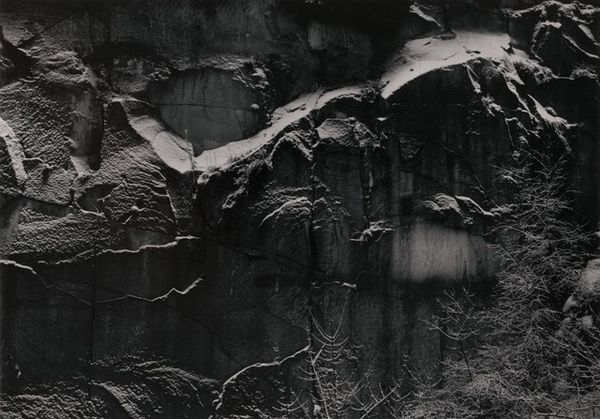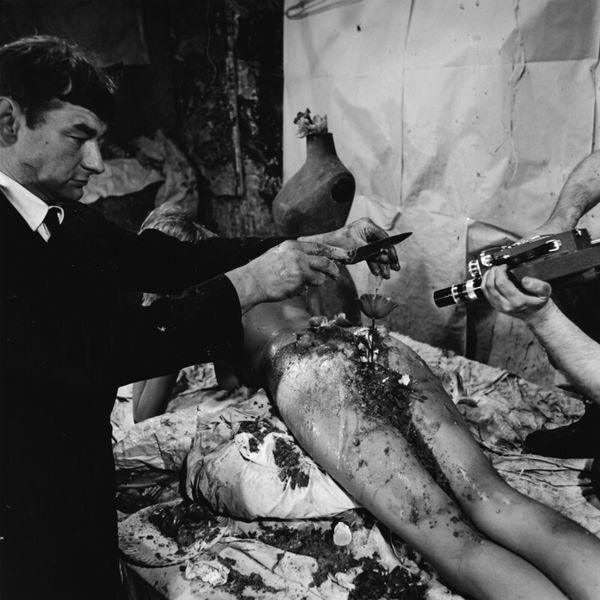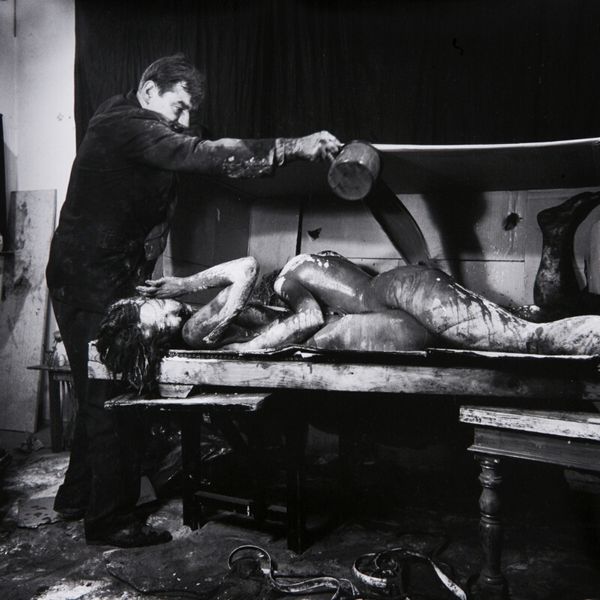
performance, photography
#
performance
#
actionism
#
figuration
#
photography
#
body-art
#
black and white
#
monochrome photography
#
monochrome
#
monochrome
Copyright: Otto Muehl,Fair Use
Editor: Here we have Otto Muehl's "Cosinus Alpha 8," a black and white photograph taken in 1964. It depicts figures covered in some sort of dark material, seemingly intertwined. It’s quite stark and unsettling. How do you interpret this work, especially considering its historical context? Curator: Muehl was a central figure in Viennese Actionism, a movement deeply entwined with Austria’s post-war reckoning. These performances, often shocking, were a deliberate disruption of the conservative, repressed social norms of the time. This image, like much of Actionism, challenges the public’s perception of art by blurring the lines between performance, body art, and social commentary. Does seeing it that way give you new perspectives? Editor: It does. Knowing that helps contextualize the apparent chaos in the photograph. The smeared bodies become less random and more like a deliberate statement. I hadn't really thought about performance art as social commentary that directly challenges institutions and traditions like this. Curator: Exactly. They used their bodies as a canvas to confront uncomfortable truths. Consider the political and institutional implications of using the body in this transgressive way. Also, think about who was invited, who was watching, and what that created as part of this cultural statement. It raises questions of spectacle and voyeurism that are important when considering these types of artworks. Editor: So, it wasn’t just about the act itself, but about the ripple effect it created within the public sphere. What impact would something like this even have in Austria in the '60s? Curator: The goal was to confront audiences and dismantle the structures upholding those social norms. The shock was meant to be productive, prompting dialogue. This legacy carries through today. Think of groups like Pussy Riot who, in turn, invite institutional backlash by performing within political spaces. It definitely makes you think about the artist’s role in society. Editor: This really changes my understanding. It's much more complex and deliberately provocative than I initially perceived. Curator: It reveals the power that art has as a force for cultural and political disruption, and the photograph gives the moment an extended public life.
Comments
No comments
Be the first to comment and join the conversation on the ultimate creative platform.

